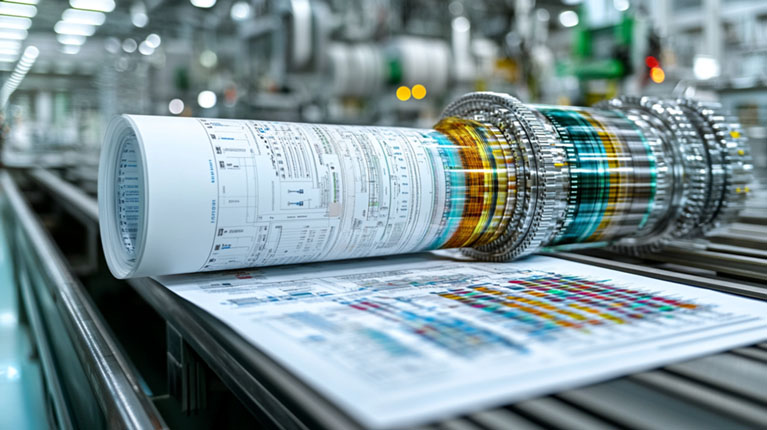The safety at work expertise of PRODOC
PRODOC has been providing technical translations for customers who manufacture products for occupational safety since 1992. We are familiar with standards such as ISO 13849‑1, EN 62061 or ISO 14119 and related terms such as Safety Integrity Level, MTTFd, PLe…
We carry out technical translations into many important industrial languages professionally and expertly. Of course, we also translate software and websites.
Our ISO 17100 certification provides you with the confidence that you are working with the right partner, also from a QM point of view.
Popular and mandatory target languages for safety technology
Legal requirements
For safety at work products, it is required without exception that user information is written in the language of all countries in which the products are sold. User information refers to the documents required by the user to safely commission and operate the device.
Provide user information in local language
As a manufacturer of occupational safety products, you must therefore ensure that the device reaches the customer with the user information in the respective national language. Often only a printed quick guide is enclosed, which contains links to more detailed documentation online.
PRODOC translates into all EU languages
PRODOC is the right address for you: our technical translators for safety at work and safety technology translate into all EU languages as well as other important Eastern European and Asian languages.

Satisfied safety at work customers
Our experience in the field of safety at work and safety technology is based on the cooperation with the following customers.
ASO GmbH
Safety sensors, Safety controls
Bihl+Wiedemann GmbH
ASi safety monitor, AS-Interface network solutions and safety components, Speed monitors, Muting modules, Safe Link safe coupling
elobau GmbH
Control elements for commercial vehicles, Sensors for machine safety, Emergency stop buttons, Safety interlocks
Leuze electronic GmbH & Co. KG
Data processing and control components, Safety sensors, Safety light barriers, Safety switches and interlocks, Machine Safety Services
Pizzato Elettrica S.r.l.
Safety switches, Safety sensors, Safety door handles, Safety modules Control stations for the elevator industry
SSP GmbH & Co. KG
Safety controls
With their expertise, our technical translators can translate our customers’ safety documentation precisely into the required target languages. Our certification according to ISO 17100 provides our customers with additional confidence.

Dipl.-Ing. Stefan Weimar
Managing Director
Technical translations for safety at work
With the increasing automation of production, there are more and more companies that have specialized in occupational safety or safety at work. The focus is always on avoiding dangers for workers, operators and maintenance personnel of machines.
The Safety at Work products seal off hazardous areas, ensure unhindered material flow into and out of hazardous areas with muting solutions, detect the intrusion of persons into the hazardous area, stop dangerous movements…
These products usually require a detailed function description:
Safety sensors
Safety light barriers, safety light grids, RFID safety sensors, magnetic safety sensors
Safety switches
Safety switches with actuator, safety hinge switches, safety rope switches
Safety modules
Safety controllers, ASi safety monitors, safe controls, safe coupling
Muting products
Muting sensors, muting controls, muting software
PRODOC’s qualified specialist translators ensure that the functional descriptions and operating instructions for these products are translated into the required target languages in a comprehensible manner.
Standards for occupational safety and their requirements
Occupational safety is a global concern, with various international standards setting the benchmarks to ensure workplaces are safe and conducive to health. One of the most prominent standards is ISO 45001, which establishes the requirements for an occupational health and safety management system. This standard assists companies in minimizing risks and preventing workplace accidents.
In addition to ISO 45001, other relevant standards include ISO 12100 for machinery risk assessment and ISO 13849 for the safety of control systems. Within the European Union, CE marking and associated standards, such as the Machinery Directive (2006/42/EC), also play a critical role.
Many of these standards mandate that operating manuals, safety data sheets, and user instructions be provided in a language understood by the users. This is particularly crucial in international companies where the workforce speaks multiple languages. A certified translation of these documents is often necessary to ensure that the content is accurately and completely conveyed.
Companies that comply with international standards and provide certified translations contribute not only to the safety at work for their employees but also meet legal and normative requirements, offering long-term legal security.
ISO 13849 is a crucial standard in the field of machinery safety. It establishes the requirements for the safety-related parts of control systems. A key component of the standard is the technical documentation, which must be clear, comprehensive, and easy to understand.
The technical documentation according to ISO 13849 must include detailed information on the design, implementation, and validation of the safety-related control parts. This includes, among other things, the description of the safety functions, the components used, their safety-related characteristics, and the results of the risk assessment.
Particular emphasis is placed on traceability. The documentation must be structured in such a way that all safety functions and their implementation are clearly traceable. This requires clear instructions and technical descriptions that ensure the control systems are correctly installed, operated, and maintained.
Furthermore, the documentation must be provided in a language that the end-user understands. In international projects, a certified translation is often required to ensure the clarity and accuracy of the documentation in various languages.
Adhering to these requirements ensures that the machinery not only complies with legal regulations but also offers a high level of safety at work.
Efficient translations for occupational safety
For the international distribution of these Safety at Work products, the provision of safety information in the local language is mandatory. We provide customized solutions to ensure that safety information can be efficiently translated into all languages.
The important thing here is consistent terminology and the option of automatically reusing translated texts from user manuals for datasheets, instruction leaflets, etc.
The following solutions are therefore particularly interesting for you:

User manuals and datasheets
The PRODOC Fair Price Policy ensures that operating instructions, user mauals, package inserts, and data sheets are translated at favourable prices

Computer Assisted Translation
CAT tools with built-in translation memory and term base for automatic reuse of translations (CAT=Computer-assisted translation)

Terminology management
Terminology management ensures uniform terminology and reduces costs for the international presence of your company
Technical translations for safety at work
Request a quotation
Dipl.-Ing. Stefan Weimar
Managing Director